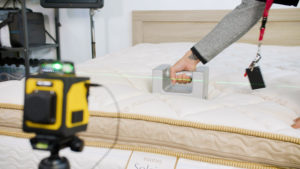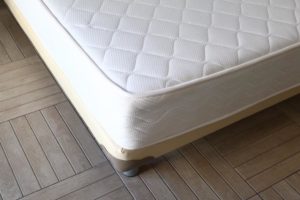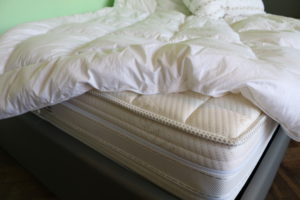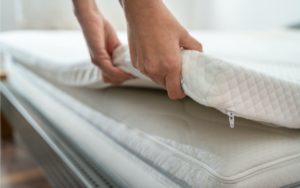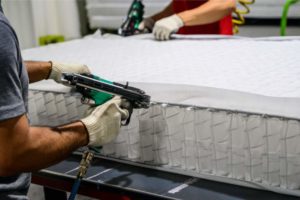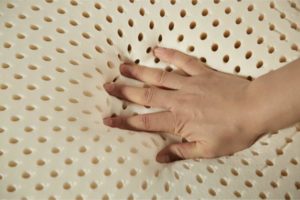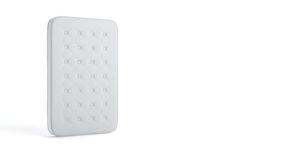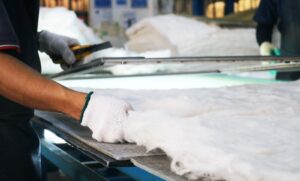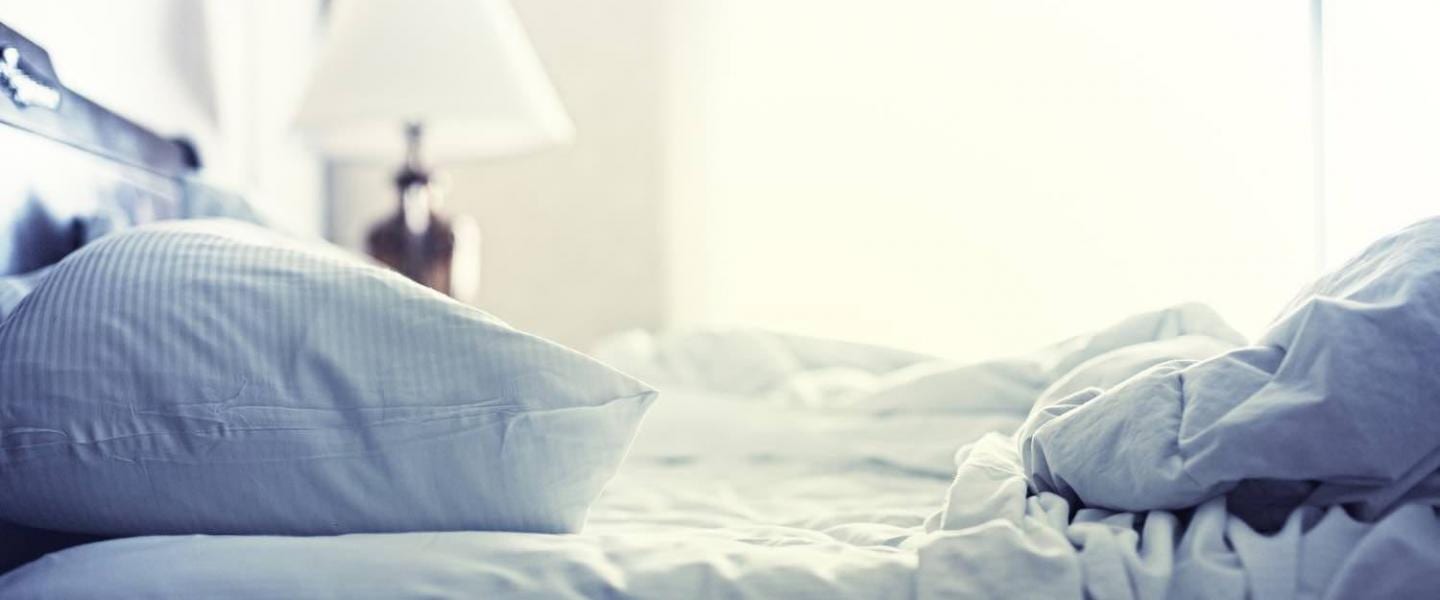When you buy through our links, we may earn a commission. Products or services may be offered by an affiliated entity. Learn more.
What is Celliant Fiber and How Is It Used in Mattresses?
Modern mattresses are made with an increasingly large variety of materials. As manufacturing technology has advanced, the mattress industry has responded by utilizing the latest tech and fiber materials to produce better mattresses. One new material that has made its way into the mattress industry is Celliant fiber. But what is Celliant fiber, and how is it used in mattresses?
What Is Celliant Fiber?
Celliant is a proprietary synthetic fiber that is made by a company called Hologenix, LLC. It’s made from a blend of thermo-reactive minerals and 88 trace elements.
The primary intended purpose of Celliant fiber is to absorb the heat emitted from the human body, convert it into far infrared radiation (FIR), and then reflect that FIR back at the body.
The manufacturer claims that this process provides a number of notable benefits, such as helping regulate body temperature, improving local blood circulation, and increasing tissue oxygenation.
You will mostly find Celliant fiber used in clothing, namely athletic wear. Recently, however, the material has also begun to be used in bedding materials, including sheets, blankets, and even mattresses themselves.
Let us help you find the perfect bed
Answer a few questions to find the right mattress for your unique needs
How Does Celliant Fiber Work?
Celliant fiber is designed to convert body heat into FIR. This infrared energy is reflected back at the body, which is intended to trigger oxygenation and vasodilation in the body.
The idea behind Celliant is to capture some of the energy that human beings lose from the body heat we emit. As you can imagine, we use substantial amounts of energy to create and distribute that warmth, and much of it simply escapes through body heat. Celliant is meant to help us recapture and reuse some of that energy.
Celliant works by taking advantage of the natural thermoreactive properties of a blend of certain minerals – including quartz, silicon oxide, and titanium oxide – and mixes them with 88 trace elements. This blend is then added to a carrier material and then either integrated into a yarn or fiber, or applied as a coating.
When integrated into fabric, this patented material essentially absorbs the energy that our bodies give off and changes its wavelength, converting it into far infrared radiation (FIR). The fiber reflects this energy in the form of FIR back towards the body, where the skin and muscle tissue can absorb it.
This FIR is thought to affect several processes in the body. For one, it can enhance vasodilation, or the dilation of blood vessels. This process is thought to increase the concentration of oxygen in muscle tissue, due to improved circulation. The manufacturer claims that these effects combine to help stimulate muscle recovery and promote more restful sleep, among other potential benefits.
How Is Celliant Fiber Used in Mattresses?
Until recently, Celliant fiber was mostly used in athletic clothing. Today, you can also find it in bedding products and in mattresses themselves. But how is Celliant used in mattresses – and why?
For best results, Celliant fiber needs to come in close contact with the skin. Because of this, manufacturers typically use Celliant in mattress covers, sheets, and blankets.
Celliant is rarely, if ever, used by itself. It’s typically added to textile blends that may also include cotton, polyester, and other common fibers. Many mattress covers use around 20 percent Celliant fiber, with the remaining 80 percent consisting of cotton, wool, polyester, or other fibers.
The use of Celliant fiber in mattresses is intended to offer several benefits. The material is designed to regulate body temperature, resulting in a more comfortable sleep experience. It’s also moisture-wicking and dries rapidly, which makes it useful for hot sleepers.
Some clinical research posits that bedding utilizing Celliant fiber may help improve sleep quality and duration. A trial conducted by Celliant’s manufacturer, together with researchers at the University of California, Irvine, found that participants gained approximately 18 minutes of sleep per night, while improving their sleep efficiency by 2.6 percent when using a Celliant-infused mattress cover. However, these results come from one very small study, making the findings inconclusive.
Today, several mattress manufacturers weave Celliant fiber into the top comfort layers of their mattresses. Alternatively, you can also find sheets, pillowcases, and mattress covers featuring this innovative material.

Still have questions? Ask our community!
Join our Sleep Care Community — a trusted hub of sleep health professionals, product specialists, and people just like you. Whether you need expert sleep advice for your insomnia or you’re searching for the perfect mattress, we’ve got you covered. Get personalized guidance from the experts who know sleep best.






